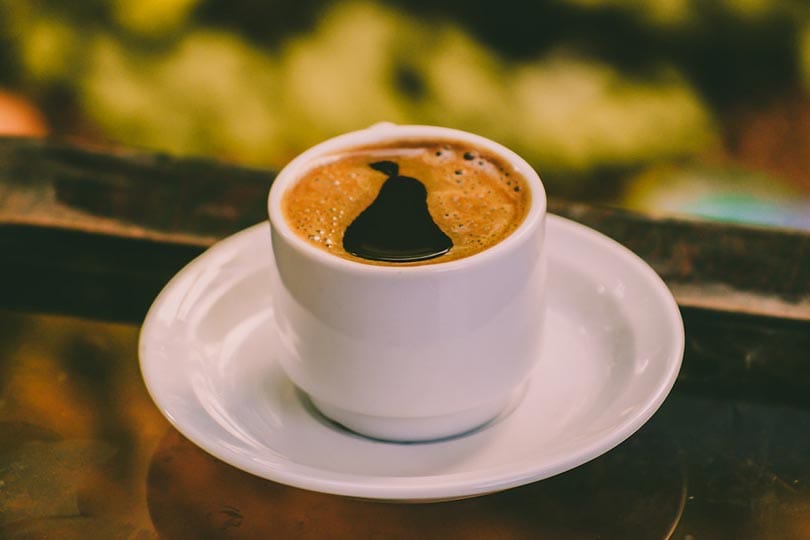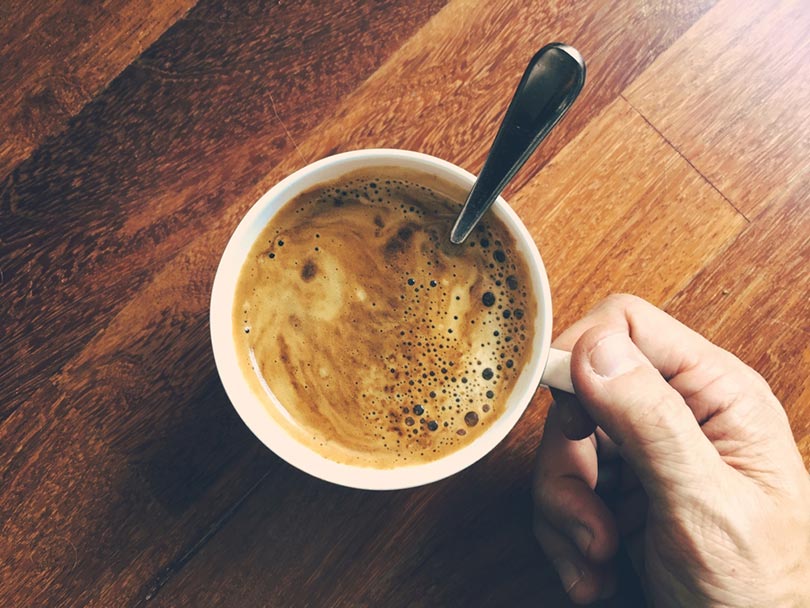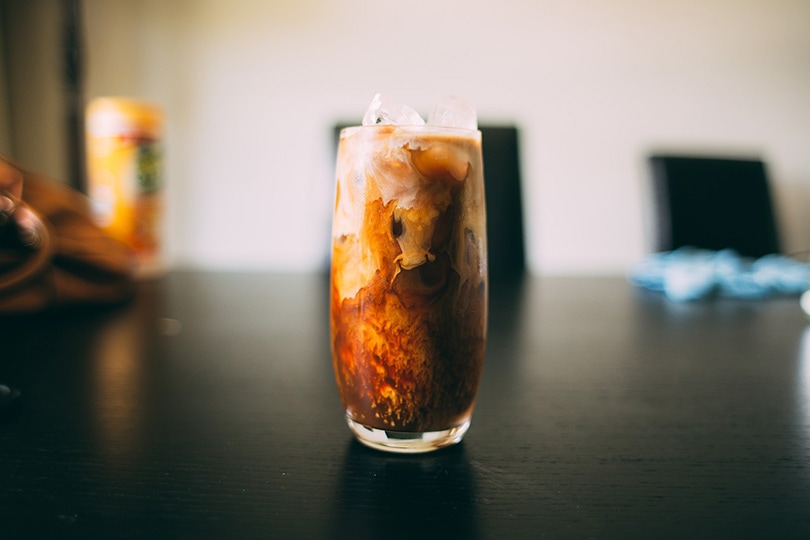
Most coffee lovers have found themselves wondering whether it is okay to drink that day-old coffee that was left out from the day before. Sometimes you are in a rush to get out the door but need that quick fix of caffeine, or maybe you have no coffee left for a fresh brew.
Regardless, you need to know if it is okay to indulge in that day-old coffee if you find yourself under any circumstance that may warrant it. Unlike some other beverages, you won’t have to worry about coffee being rancid or full of bacteria after sitting out for a day.
While it certainly won’t have the flavor and freshness of a fresh brew, you could technically drink it if you want to. However, the recommendation is to avoid drinking coffee that is more than 12 hours old, unless it’s been kept in a sealed container in the refrigerator. Recommendations change if you use creamer, so let’s look a little further into what happens to coffee when it’s been left out.

What Happens When Coffee is Left Out?
Coffee and all other foods and beverages go through a process known as oxidation when they have been left out. Oxidation is a chain reaction that occurs in the presence of oxygen. This process is responsible for the deterioration of the quality of food and beverage leading to a change in odor and flavor.
Oxidation affects things differently, the process can vary by ingredients, packaging type, storage methods, and even the type of processing the food or drink has gone through. Ultimately, oxidation will cause bacterial growth and lead to rancidity.

Oxidation of Coffee
After brewing, coffee will typically maintain its freshness for around 1 to 2 hours but once it comes in contact with oxygen, it will begin the degradation process. If you’ve ever had a cup of coffee a few hours after your morning brew, you have probably noticed a change in the taste and aroma, even though it may be minimal, that’s because oxidation is taking place.
Coffee will eventually mold when left out too long. If you’ve ever left coffee sitting in your pot for a few days by accident, you probably noticed mold growth floating at the top. Just like the grounds will begin to mold after they are being run through the machine. This is the same reason why apples begin to turn brown after they’ve been sliced.
It is highly recommended that you drink your black coffee within 12 hours of brewing to be on the safe side and reduce the risk of ingesting bacteria or mold. That’s not saying it won’t be safe to drink after 24 hours, because it does oxidize slower than other foods, but it’s best to err on the side of caution.
Besides, the flavor profile and smell of the coffee will be heavily altered due to the chemical compound breakdown and increased acidity.
What If I Put Milk or Cream in My Coffee?
If you put creamer in your coffee, as many of us do, the rules are drastically different. You should not be drinking day-old coffee that has been left out with creamer already mixed in. Any coffee that has already been mixed with creamer, should be consumed within 1 to 2 hours.
Cold brew coffee that has already been mixed with cream will also need to be consumed within 2 hours if left out at room temperature. However, you can place cold brewed coffee inside of an airtight container and store it in the fridge for up to 2 days to maintain freshness.

Tips for Drinking Day Old Coffee (If You Must)
In a perfect world, you would never have to drink day-old coffee, but if you find yourself in a pinch for time or you are out of coffee grounds for a fresh brew, trust us, we understand. Here are tips to help you out if you find yourself in need of drinking that day-old coffee.
Do Not Reheat
Once the coffee machine’s warmer turns off the coffee begins to cool. One might think it would be a good idea to reheat the old coffee but think again. The reheating process will only oxidize the coffee quicker, making it even more bitter. Reheating should only be done within the first couple of hours after brewing, otherwise, skip it.
Place It in the Refrigerator
If you can’t make it through the whole pot but want to savor it rather than having to brew something fresh, put the coffee in the refrigerator to help slow down the oxidation process. This will help preserve flavor and aroma.
Pour Over Ice and Use Cream
If you have left your coffee out past the point of reheating and are in desperate need of that day-old quick fix, pour it over some ice and doctor it up. We’ve already gone over why you should never reheat, even if you are a lover of that soothing, warm morning coffee, but iced coffee it is. Adding in some creamer or other mix-ins will help minimize that lackluster, and stale flavor.

How Long Is Cold Brew Coffee Good For?
Now that we’ve mentioned pouring day-old coffee over some ice, we’ll touch base for those cold brew coffee lovers out there. Cold brewing is an entirely different process, and the coffee will have a much longer shelf life than hot coffee.
The longer shelf life is one of the best benefits of cold brew, other than providing coffee enthusiasts with a cool, refreshing way to indulge in their favorite beverage. Cold brew coffee will stay fresh for several days. Remember that cold brew coffee is not the same as pouring regularly brewed coffee over ice.
Cold brew will maintain its flavor for up to 7 days and can last up to 10. You may start to notice that staleness begins to take over after that 7-day mark, though. It will need to be stored properly to maintain this freshness, though. It’s best to store it in the refrigerator inside a glass container that can be sealed tightly.
Signs Your Cold Brew Is Going Bad
Like hot coffee, cold brew will go through the same oxidation process, but at a much slower rate, here are some indications that your cold brew is starting is going or has gone bad:
- Stale or acidic taste
- Lack of aroma
- Decreased flavor
- No noticeable caffeine kick
- Rancid smell
- Visible mold

Conclusion
We don’t recommend drinking day-old coffee, though sometimes it feels like the situation calls for it. Since coffee goes through the oxidation process slower than other foods, you can technically consume day-old coffee without much risk of mold or bacterial growth, but as a general rule, it’s best to drink it within 12 hours. There are some handy tips to help freshen up that old coffee if you need to resort to it, but we say spoil yourself and go get a fresh cup.
Featured Image Credit: samer daboul, Pexels
Table of Contents















